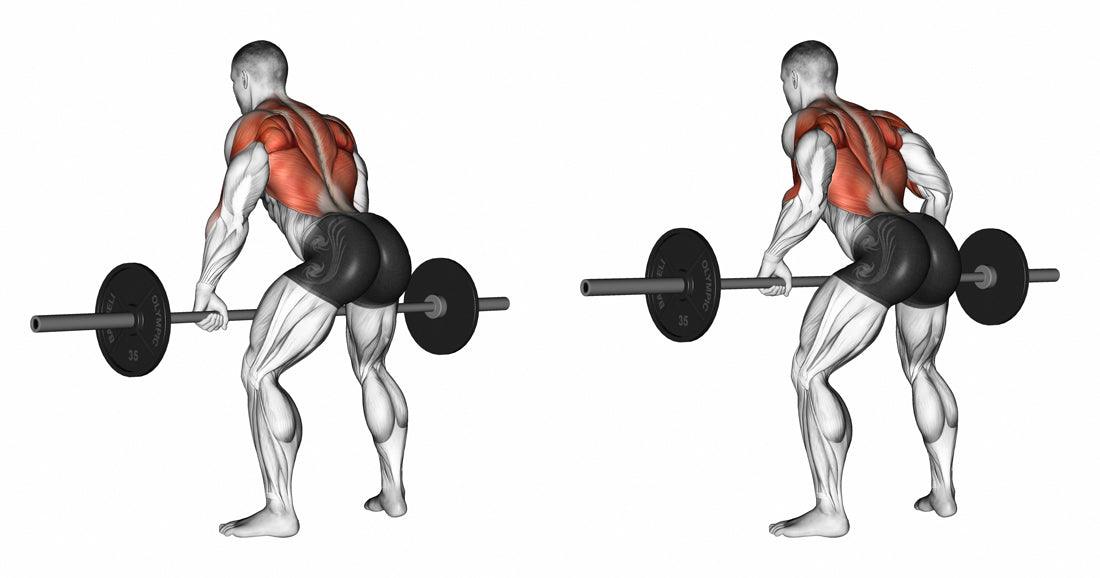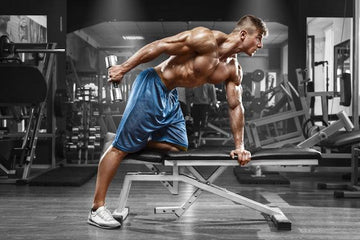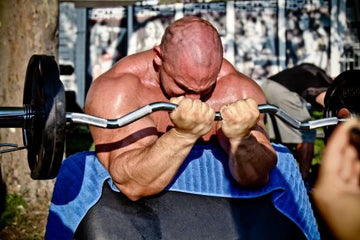

Best Back Exercise: What is the best exercise to build a strong back?
Table of Contents
Hard-CORE: Best Back Exercise
The barbell bent over row is just about the best back movement you can do to get a huge back. If you look at some of the greatest bodybuilders in the world with big backs (i.e. Dorian Yates, Ronnie Coleman, Lee Haney, etc.) all were big advocates of barbell rows and free weight rows.
Many lifters may substitute the barbell T-Bar row for bent rows, but bent rows activate slightly more muscle of the back. According to an electromyography study of men and women who all had at least two years of strength training experience, the bent-over barbell row had an EMG activity of 93 percent, and the T-bar row comes in at 89 percent. It’s not uncommon to see people in the gym using the hammer machine row for back or the single arm cable row as an alternative to doing bent rows, but this is a mistake. A lifter is not going to get the same muscle activation in the back with cable rows; this was supported by research indicating greater EMG activity in erector spinae in bilateral free-weight row compared to standing unilateral cable row. In addition, barbell bent rows are a great movement for core training.
When most people hear of core training, they immediately think of the abdominals, but the core is also composed of the pelvic muscles, hip muscles, and mid and back muscles. Basically, the core is the one responsible for keeping your entire body stabilized regardless of whether you are moving or are at rest. Having a strong core is associated with improved performance, reduced back pain, and better posture and stability in sports. Researchers wanted to compare core muscle activation in 3 different row exercises (free-weight bent-over row, seated cable row and machine row) performed unilaterally (i.e. single arm row) and bilaterally (i.e. two arms rows), at matched effort levels. The exercises were performed with the same relative effort (six-repetition maximum; 6-RM). 15 resistance-trained men performed the different exercises in randomized order. It was hypothesized by the researchers that the greater stability requirement of using free-weight would result in more muscle activation than that of machine and cables (free-weight>cable>machine).
Researchers examined the muscle of the middle of the back, which were the erector spinae (erector spinae muscle consists of three columns of muscles, each running parallel on either outer side of the vertebra and extending from the lower back of the skull all the way down to the pelvis) and multifidus (another back muscle running down the spinal cord). The researchers also examined the external obliques (muscle running down the side of the abdominals). At the end of the study, the results suggest that for core training, the barbell bent row and single arm bent row are two of the most important exercises to use:
–The barbell bent row and single arm dumbbell row muscle activity in erector spinae was greater than machine row. In the machine row, the chest is supported by a pad, which reduces the tension needed to activate the erector spinae for spinal stability and maintaining proper hip angle. So the barbell bent rows and single arm free weight row are two of the best exercise for a bigger back! Don’t waste your time doing single arm and double handed machine rows, you’re going to get much better back activation with free weights.
Performing single arm rows with free weights, or machines and cables, activated the external abdominal oblique muscle more than bilateral performance, regardless of exercise.
- When performing exercises with two hands, the weight of the bar provides a counterbalance across the abdominals, whereas single arm rows generates a destabilizing torque in the core, so the obliques are activated more to stabilize the core. Performing each exercise unilaterally or single arm resulted in 59-63% more activity in the external obliques compared to the equivalent with two hands exercise.
Choice of exercise modality should depend on the aims of the exercise program, but bilateral and unilateral bent-over free-weight row is recommended to develop core muscle strength in resistance-trained individuals.
Saeterbakken A, Andersen V, Brudeseth A, Lund H, Fimland MS. The Effect of Performing Bi- and Unilateral Row Exercises on Core Muscle Activation. Int J Sports Med. 2015 Jul 2.
Fenwick C M, Brown S H, McGill S M. Comparison of different rowing exercises: trunk muscle activation and lumbar spine motion, load, and stiffness. J Strength Cond Res 2009; 23: 350–358

















